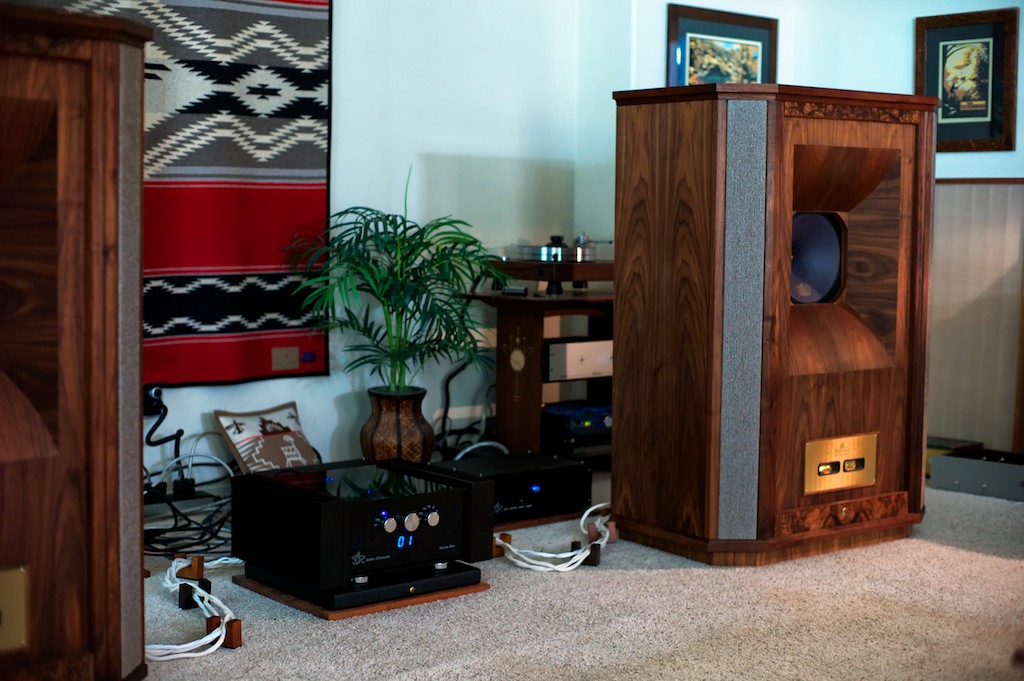If you read the review I wrote for Positive Feedback Online about the remarkable ASR Emitter II Exclusive Version Blue amplifier designed by Friedrich Schaefer in Herborn, Germany, you know that in that article I discussed how high-performance audio breaks naturally into three groups of performance attributes that relate to their overall performance level, or as I shall call it in this post, their Order of performance.
During the years that I’ve been writing about audio my perceptions of audio performance have evolved quite a lot, and the critical language I have used to articulate my perceptions has evolved quite a lot too. Then along comes the ASR Emitter II Exclusive Version Blue amplifier, and I realized that I still lacked an adequate critical language to evaluate and articulate the performance of those audio components of the Third Order.
To lay the foundation let’s start with the First Order. When I use the phrase “First Order” I am using it in a similar sense that a scientist or engineer might use it when describing a first order approximation. In my usage, these orders of approximation refer to the various orders of audio performance and indicate increasingly more refined performance. A First Order component is an entry level high-performance audio component that performs well according to certain criteria, a Second Order component adds performance attributes that signify the next level of refinement, the Third Order adds yet another level of performance refinement, and so forth.
The First Order is that fairly large group of audio components that perform well on the reproduction of those most basic non-musical sonic attributes of recordings like imaging, soundstage, resolution, transparency, soundspace, and so forth. Those terms are part of a fairly standard lexicon of critical language that has been adopted by audio enthusiasts and writers alike to describe those most basic sonic aspects of audio performance; where transparency refers to being able to aurally ‘see’ into the recording; where soundstage refers to the three dimensions of the recorded space in width, height and depth; where soundspace refers to the acoustic ‘space’ of the soundstage; and where imaging refers to the feeling of solidity and localization of instruments & musicians on the soundstage. There is of course a distribution of varying performance prowess among those components in the First Order, just as there is a distribution in a population for almost any characteristic.
For those of you who have been following my writing over the years, you know that I didn’t feel that the standard audiophile lexicon of the First Order was capable of articulating the performance of audio components related to the musical attributes encoded on recordings, so I added the standard lexicon that musicians use to describe music to my reviews, like timbre, melody, rhythm, harmony, dynamics, beat, etc. So there is among that larger group of audio components that performs well on the First Order criteria, a smaller subset of audio components that also performs with high fidelity on the reproduction of the musical attributes encoded in recordings – the Second Order.
So a quick refresher on the Second Order musical lexicon: timbral realism at the band level is the band’s signature ‘sound’, at the individual instrument level it’s the unique ‘voices’ of instruments, and they should sound recognizably like themselves in tone and texture so that their full tone color can develop, which lends a feeling of beauty and expressiveness to the music. Melody is the tune you ‘whistle while you work’, harmony is the treble & bass accompaniments to the melody, and rhythm is the steady beat that determines the tempo. Dynamics are variations in loudness that should evoke that which is heard in live music, and also helps establish an emotional connection to the melody and rhythm. As for loudness, music playback should be capable of live music loudness levels to be considered high fidelity. Tempo is the speed of a given piece of music, and it helps convey both the mood and speed of the music.
Of that smaller subset of audio components that is the Second Order and that performs well on both sonic & musical attributes of recordings, there is an even smaller subset of audio electronics that transcend those attributes and make recorded music come alive to become very involving in the way a live musical experience is involving, strongly engaging listeners’ emotions while drawing the listener into the artistic experience of the music, rather than just presenting 'sound' for the listener to listen to, as the vast majority of audio components do – this is the Third Order.
At this point I do not yet have an audio lexicon that adequately describes the Third Order of audio refinement – the realm of emotional involvement and artistic expression. I have been giving this aspect of music reproduction a lot of thought lately, and I have been considering such things as the lexicon for judging musical competitions, like tone, balance & blend, ensemble togetherness, interpretation related to performance styling, musicianship as it relates to phrasing, and so forth, but those terms just don’t capture the essence of the emotional connection that Third Order components convey.
I have come to the conclusion that certain audio components, like the ASR Emitter II Exclusive Version Blue amplifier, the Tannoy Westminster Royal SE loudspeakers, and the Sablon Audio Panatela component speaker cables, for example, are as much felt with the heart as they are heard with the ears, and as such I have found it rather hard to develop a lexicon to articulate the attributes of the emotional connection they create.
To get closer to developing a Third Order lexicon I thought I’d ask the smartest person I know to comment – that would be you. So what do you think the primary lexicon is that describes a component’s success in creating an emotional connection to the music?































